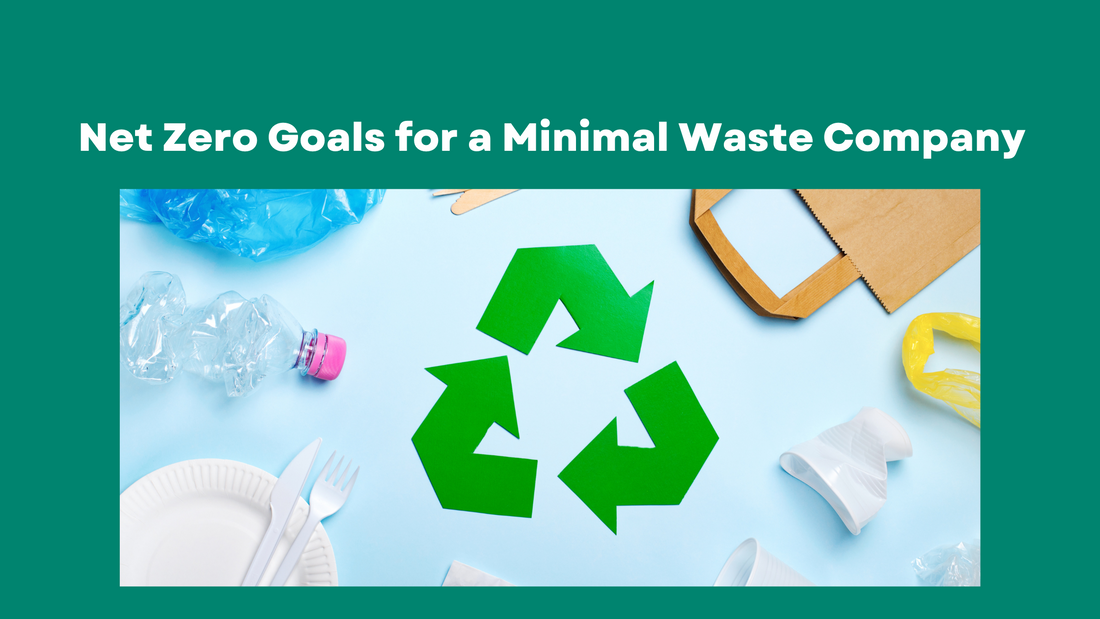As businesses increasingly recognize the urgent need to address climate change, setting net zero goals has become a critical strategy for achieving sustainability. For minimal waste companies, these goals align with their core mission and enhance their brand reputation and operational efficiency. Here’s a guide on effectively setting and achieving net zero goals.
Understanding Net Zero
Net zero refers to balancing the amount of greenhouse gases emitted with the amount removed from the atmosphere, effectively resulting in no net increase. Achieving this goal involves reducing emissions and implementing strategies to offset any remaining emissions through carbon capture or investing in renewable energy projects.
Step 1: Assess Current Emissions
The first step in setting net zero goals is to conduct a comprehensive greenhouse gas (GHG) emissions inventory. This involves:
- Identifying Sources of Emissions**: Categorize emissions into scopes:
- Scope 1: Direct emissions from owned or controlled sources (e.g., company vehicles).
- Scope 2: Indirect emissions from purchased electricity, heat, or steam consumption.
- Scope 3: Other indirect emissions (e.g., supply chain, waste disposal).
- Calculating Emissions: Use established methodologies and tools, such as the GHG Protocol, to quantify emissions associated with your operations. This assessment provides a baseline to measure progress.
Step 2: Set Clear, Measurable Goals
Once emissions are assessed, the next step is to set clear, achievable net-zero targets. Consider the following:
- Timeframe: Set a realistic timeline for reaching net zero, typically aiming for 2030 or 2050, depending on your industry and resources.
- Specificity: Define specific targets for each scope of emissions. For example, you might aim to reduce Scope 1 emissions by 50% by 2025 and Scope 3 emissions by 30% by 2030.
- Alignment with Standards: Consider aligning your goals with established frameworks, such as the Science Based Targets Initiative (SBTi), which provides guidelines for setting science-based targets in line with climate science.
Step 3: Develop an Action Plan
A detailed action plan is essential for translating your goals into actionable steps. This should include:
- Emission Reduction Strategies: Identify initiatives to reduce emissions, such as:
- Energy Efficiency: Upgrade to energy-efficient appliances and lighting.
- Renewable Energy: Invest in solar panels or purchase green energy from providers.
- Sustainable Practices: Implement waste reduction strategies, like recycling and composting, to minimize Scope 3 emissions.
- Employee Engagement: Involve employees in sustainability initiatives. Foster a culture of sustainability through training and awareness programs, encouraging team members to contribute ideas.
- Supplier Collaboration: Work with suppliers to reduce emissions throughout the supply chain. Engage them in sustainability practices and seek out partnerships with low-emission suppliers.
Step 4: Monitor Progress and Adjust
Regularly monitor your progress towards net zero goals to ensure accountability and transparency. This can involve:
- Tracking Emissions: Use software tools to track emissions regularly and assess the effectiveness of implemented strategies.
- Reporting: Communicate progress to stakeholders through sustainability reports, highlighting achievements and areas for improvement.
- Adjusting Goals: Be prepared to adjust your goals and strategies based on new data, technological advancements, or regulation changes.
Setting net zero goals for a minimal waste company is an essential step toward sustainability and an opportunity to lead by example in the business community. By assessing current emissions, setting clear goals, developing actionable plans, and monitoring progress, companies can significantly reduce their environmental impact and contribute to a more sustainable future. This commitment benefits the planet and enhances brand loyalty and resilience in an increasingly eco-conscious marketplace.
Re-Nuble designs products for growers with growers. Ask us how we can meet your needs here.
